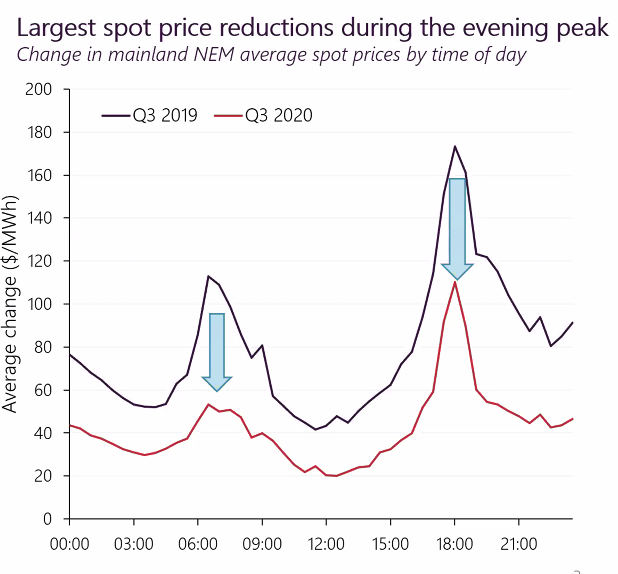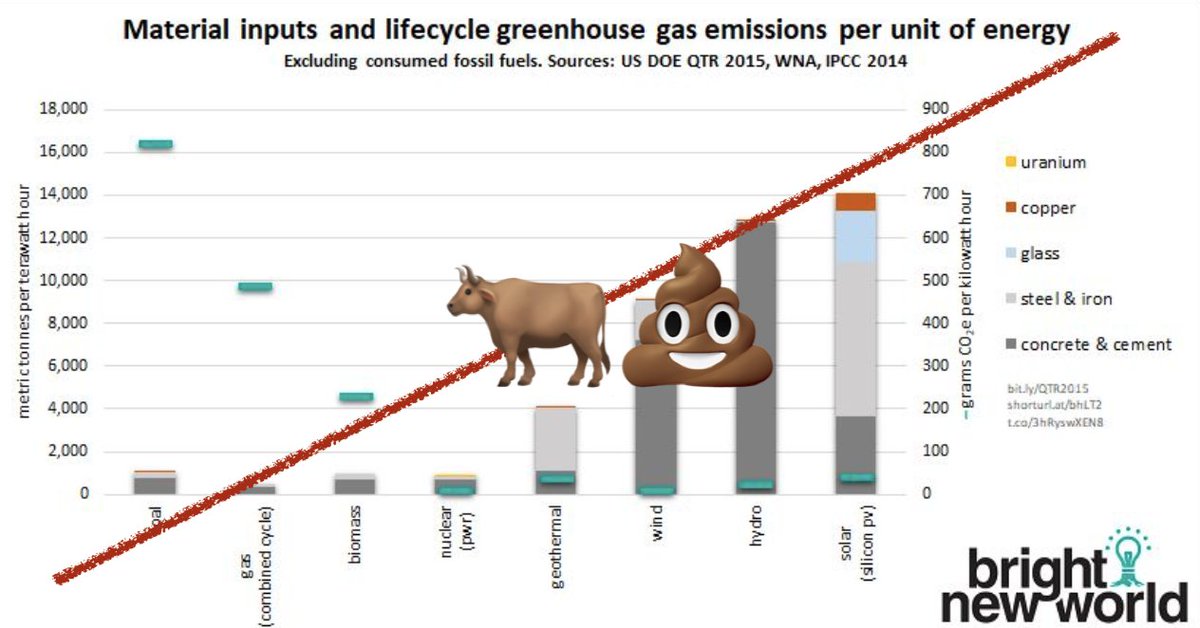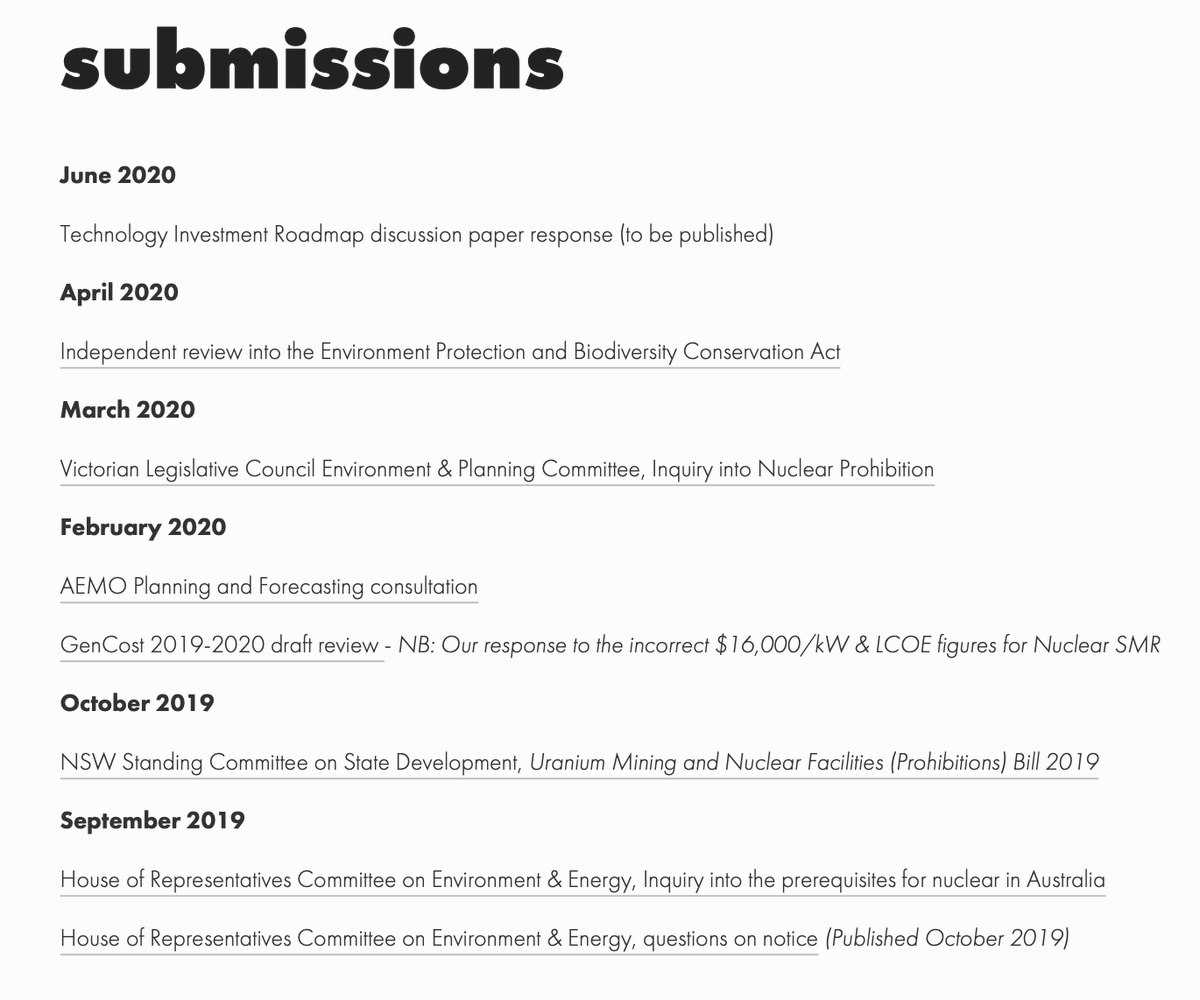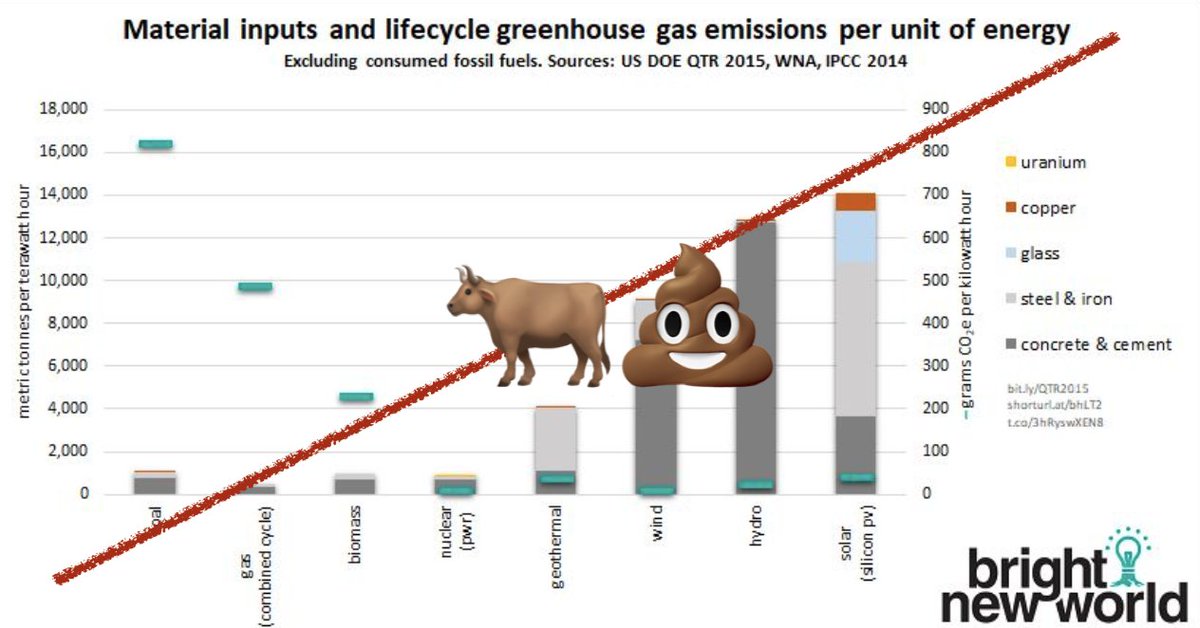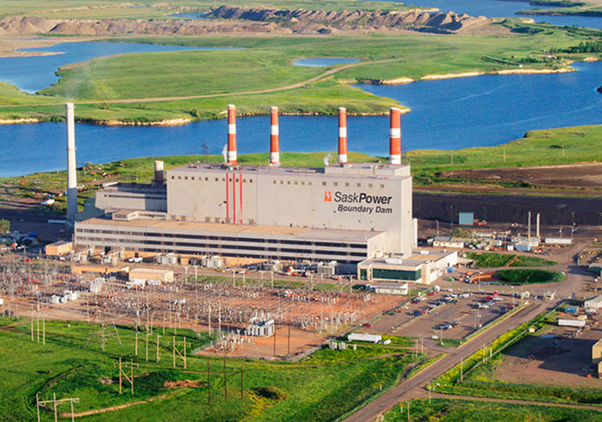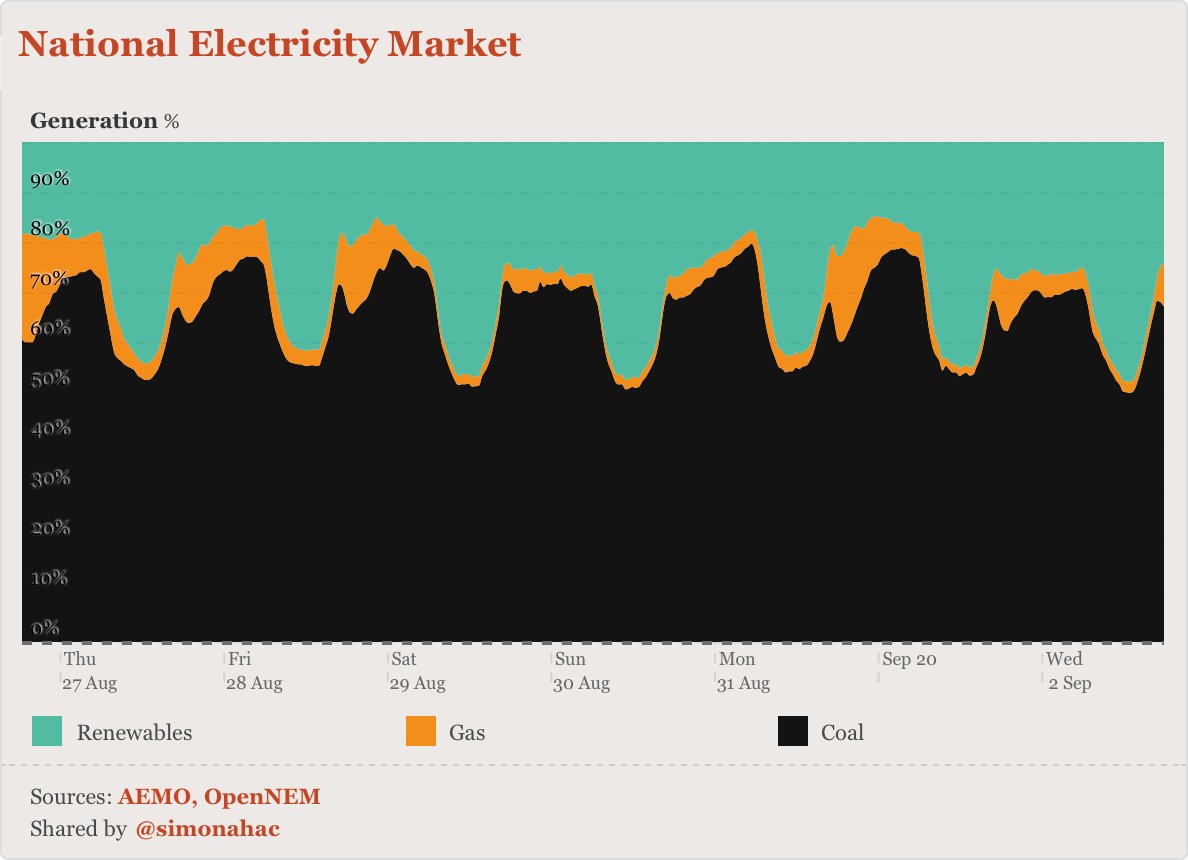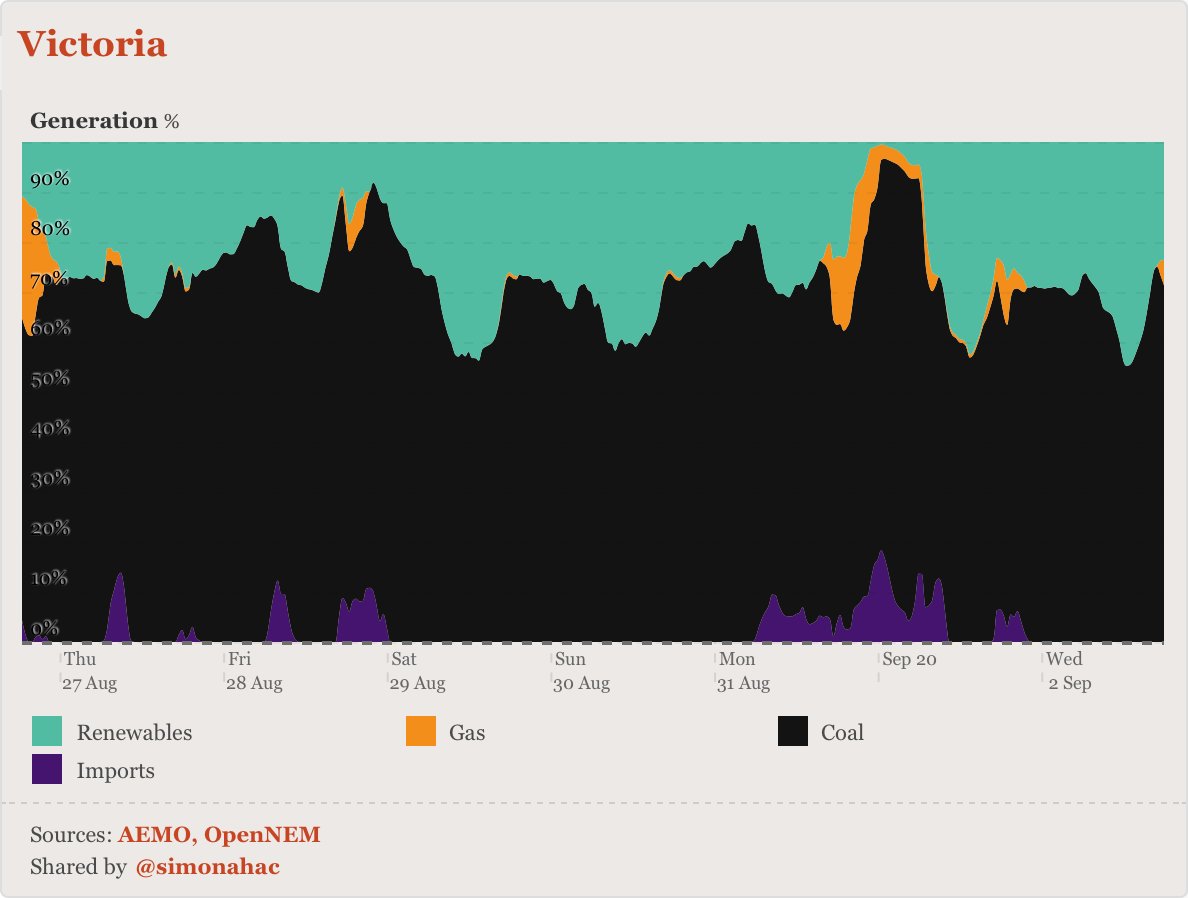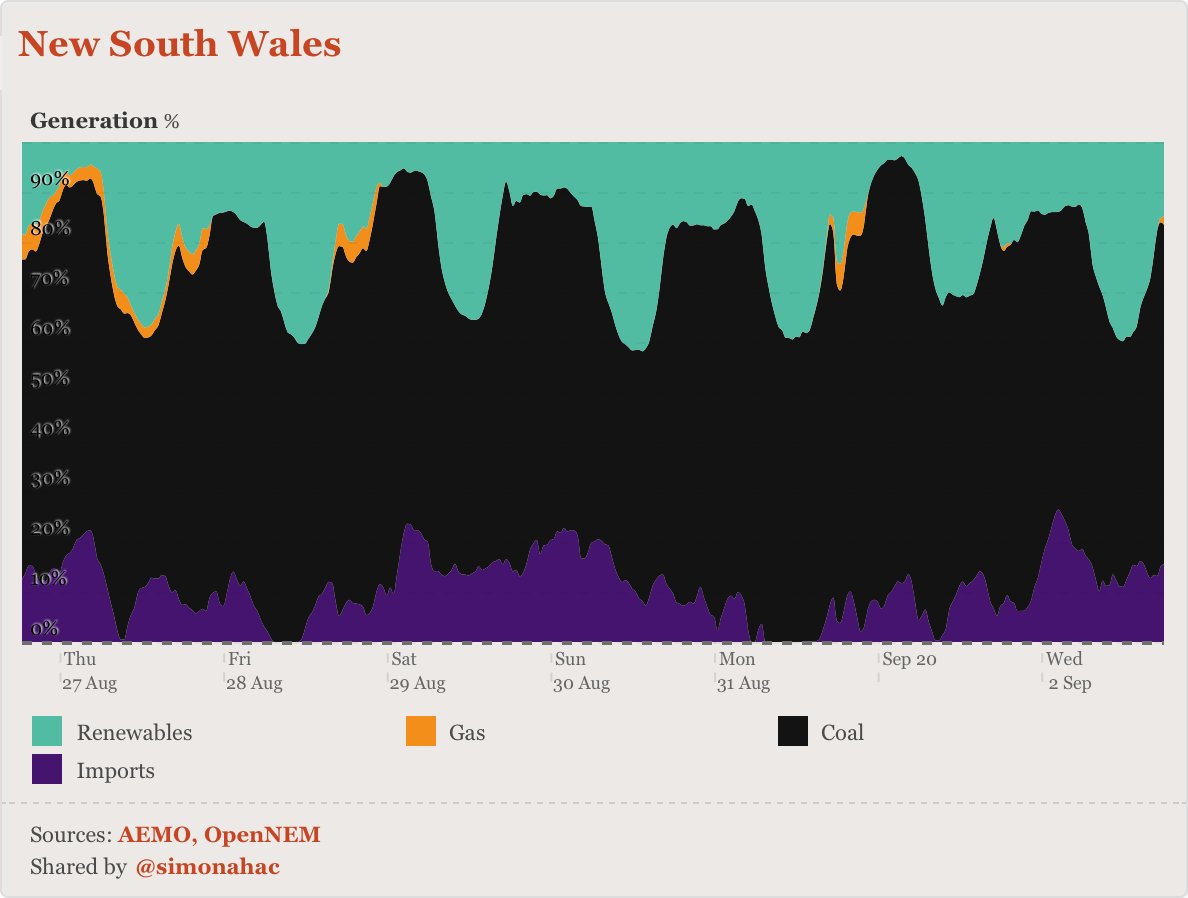
🤓 gather round for a little yarn about #australia's remarkable, accelerating energy transition. 🧵
just 3 years ago #AlanFinkel @ScienceChiefAu was tasked to review the national electricity market (NEM).
he recommended that AEMO prepare an #IntegratedSystemPlan every 2 years.
just 3 years ago #AlanFinkel @ScienceChiefAu was tasked to review the national electricity market (NEM).
he recommended that AEMO prepare an #IntegratedSystemPlan every 2 years.
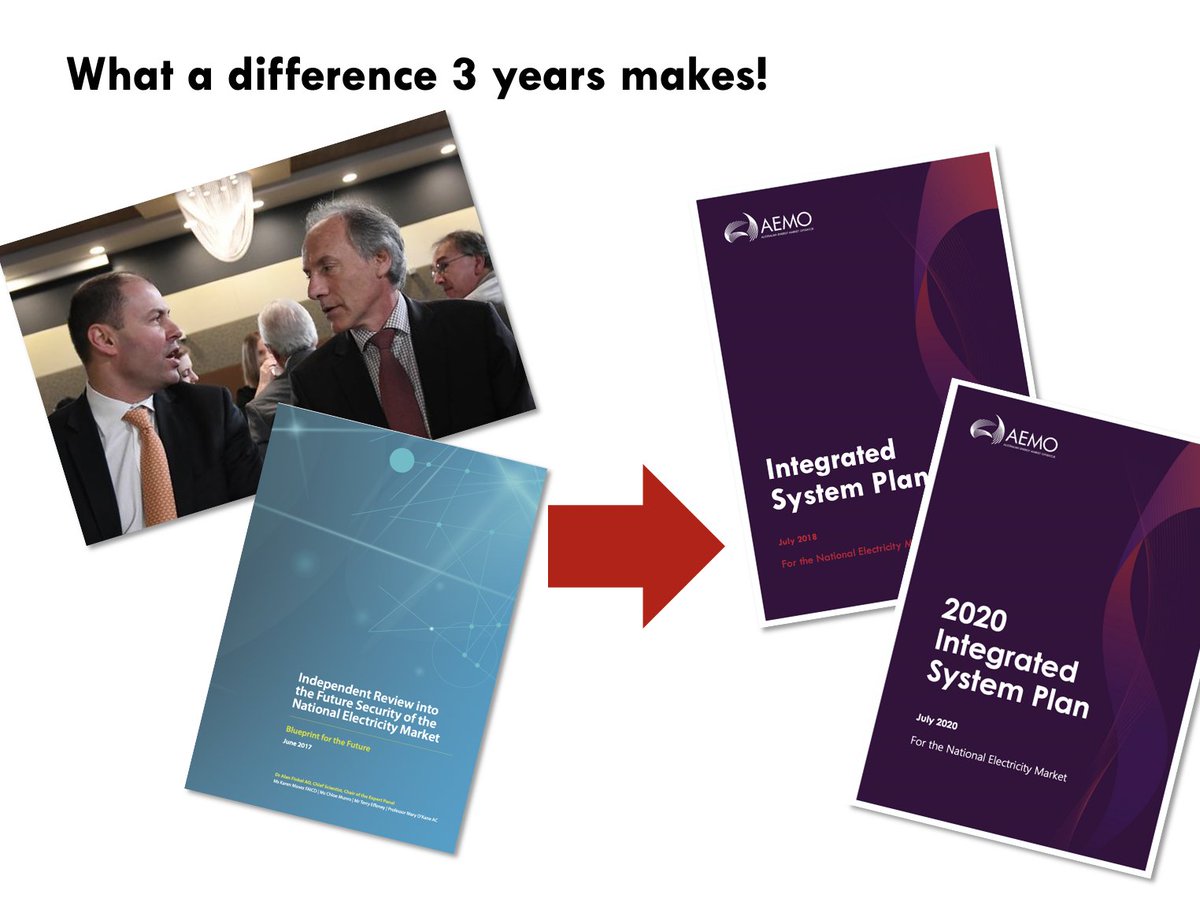
the #ISP has 5 core scenarios…
don't think of a scenario as a prediction, but rather a set of constraints/assumptions and the cheapest path found to supply power within those constraints.
let's talk about the 'step change' scenario.
don't think of a scenario as a prediction, but rather a set of constraints/assumptions and the cheapest path found to supply power within those constraints.
let's talk about the 'step change' scenario.

'step change' is the closest to being compliant with the paris agreement — ie. a half-decent start if we want to keep the great barrier reef, not destroy civilisation etc.
it gets us to 96% renewables in 2042.
(the central 'business as usual' scenario is a few years slower.)
it gets us to 96% renewables in 2042.
(the central 'business as usual' scenario is a few years slower.)
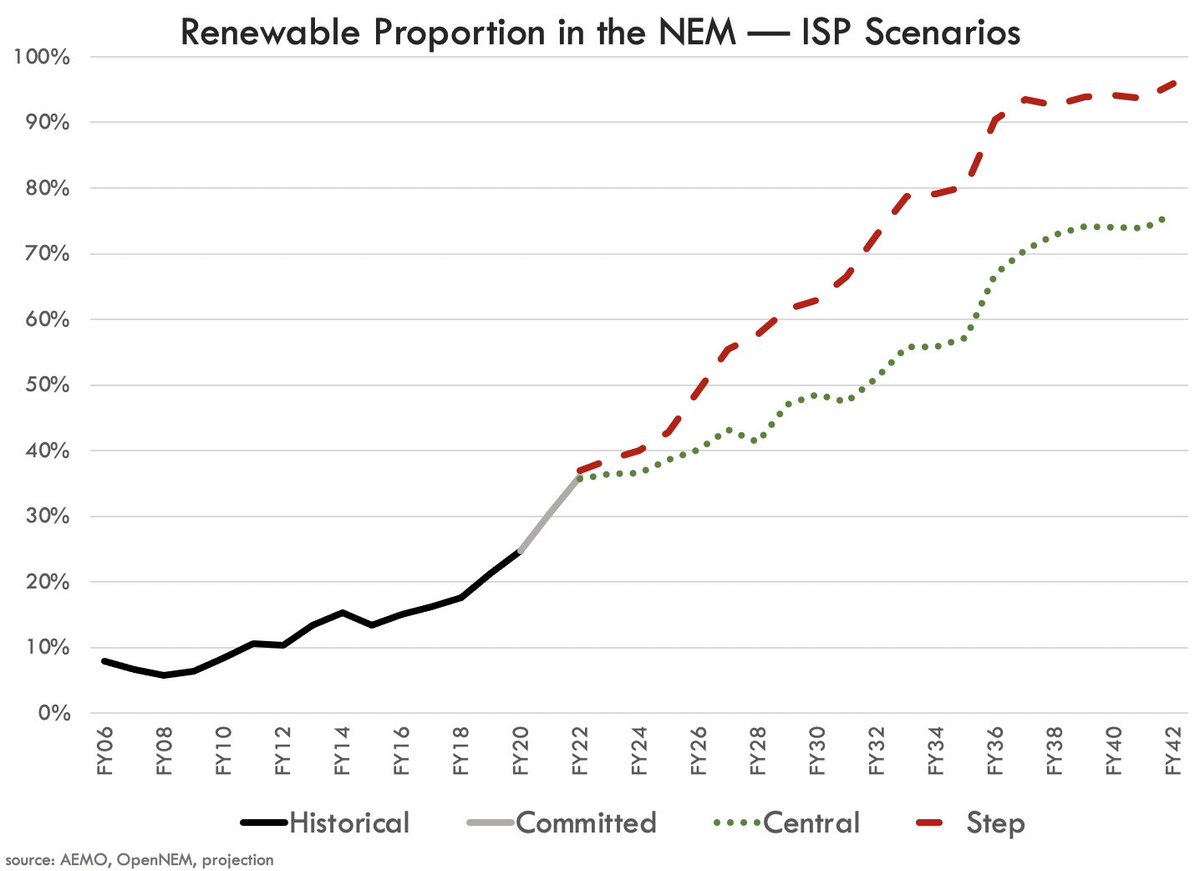
'step change' provides a credible path for solving the energy trilemma:
we can have it all!
• reliable
• affordable
• low emissions.
i wrote about it here:
theguardian.com/commentisfree/…
we can have it all!
• reliable
• affordable
• low emissions.
i wrote about it here:
theguardian.com/commentisfree/…
#finkel's 2017 review put forward several plans for transitioning away from coal — roundly rejected by @LiberalAus. 😿
here's the decline of coal under finkel's scenarios — i've added the ISP's 'step change' in red.
coal is set to disappear *much* faster than thought in 2017.
here's the decline of coal under finkel's scenarios — i've added the ISP's 'step change' in red.
coal is set to disappear *much* faster than thought in 2017.

the #finkel review showed that electricity sector emissions would reduce quickly as coal retired…
…and the ISP's step change scenario again shows a *much* steeper decline than thought of just 3 years ago.
…and the ISP's step change scenario again shows a *much* steeper decline than thought of just 3 years ago.
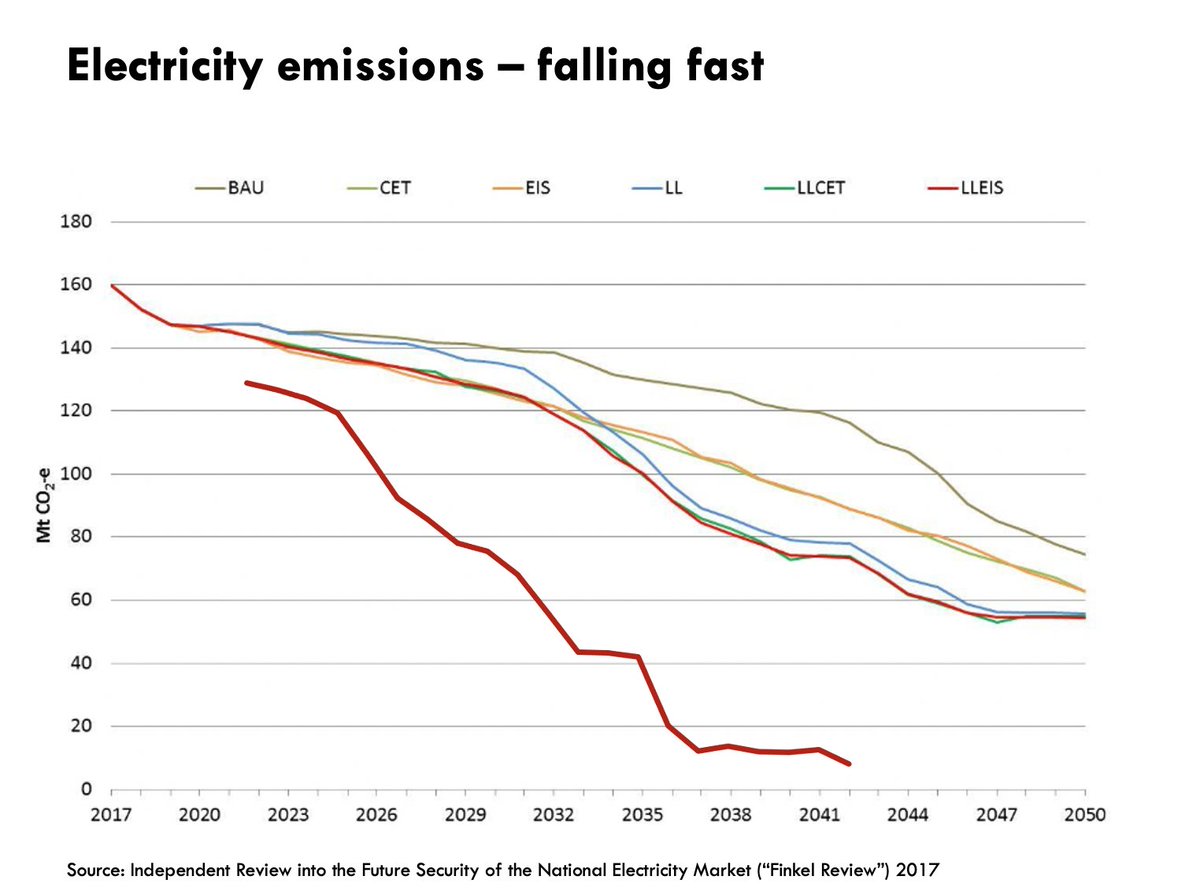
#finkel's review argued that prices would gradually increase, unless we created a 'clean energy target' (that would have subsidised renewables *and* gas).
here i've added a thick red line for the *actual* average wholesale electricity cost — it's fallen further and faster.
here i've added a thick red line for the *actual* average wholesale electricity cost — it's fallen further and faster.

ok, so 'step change' is just one of the ISP scenarios… and it's 'ambitious'… so how can we say it's likely?
well actually, we're already moving *faster* than the 'step change' scenario.
we've passed a tipping point.
well actually, we're already moving *faster* than the 'step change' scenario.
we've passed a tipping point.
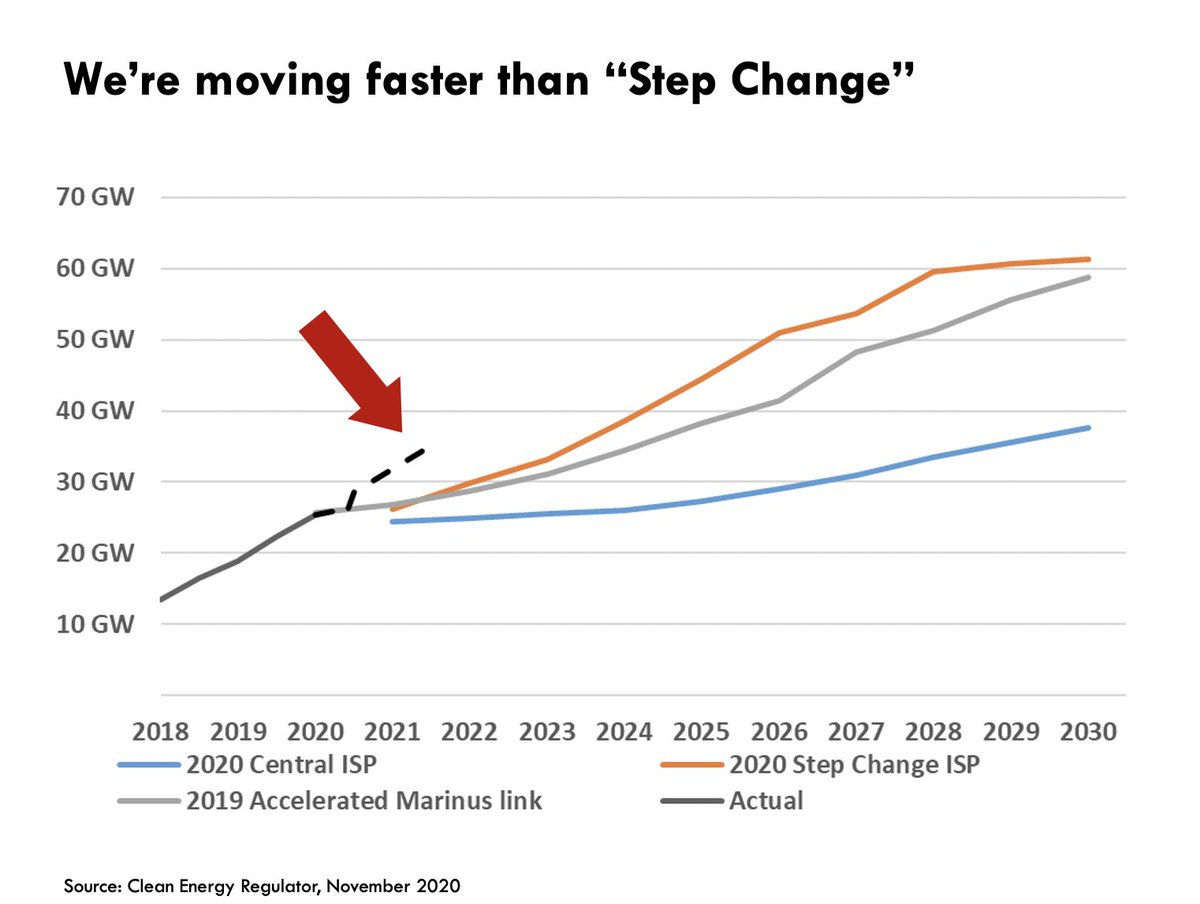
in just a decade, the ratio of coal to renewables in the national electricity market has gone from 10-to-1
…to 2-to-1
and fossil gas? it's actually gone down.
…to 2-to-1
and fossil gas? it's actually gone down.
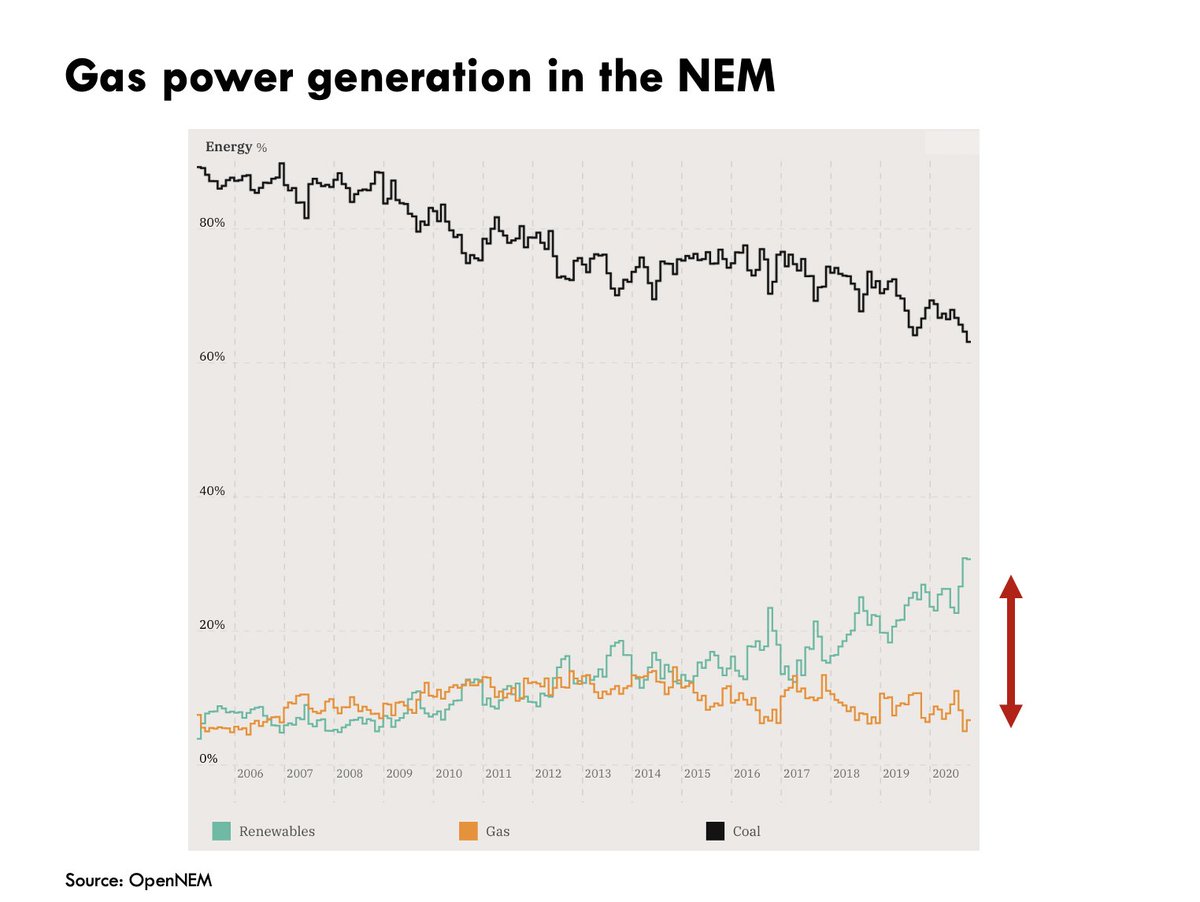
yep, we burnt a fair bit of fossil gas around 2014, at a time when the many newly established coal-seam gas wells had started producing and the LNG export sector wasn't quite ready to take the gas.
this 'ramp gas' *was* cheap… so we burnt it for power.
this 'ramp gas' *was* cheap… so we burnt it for power.
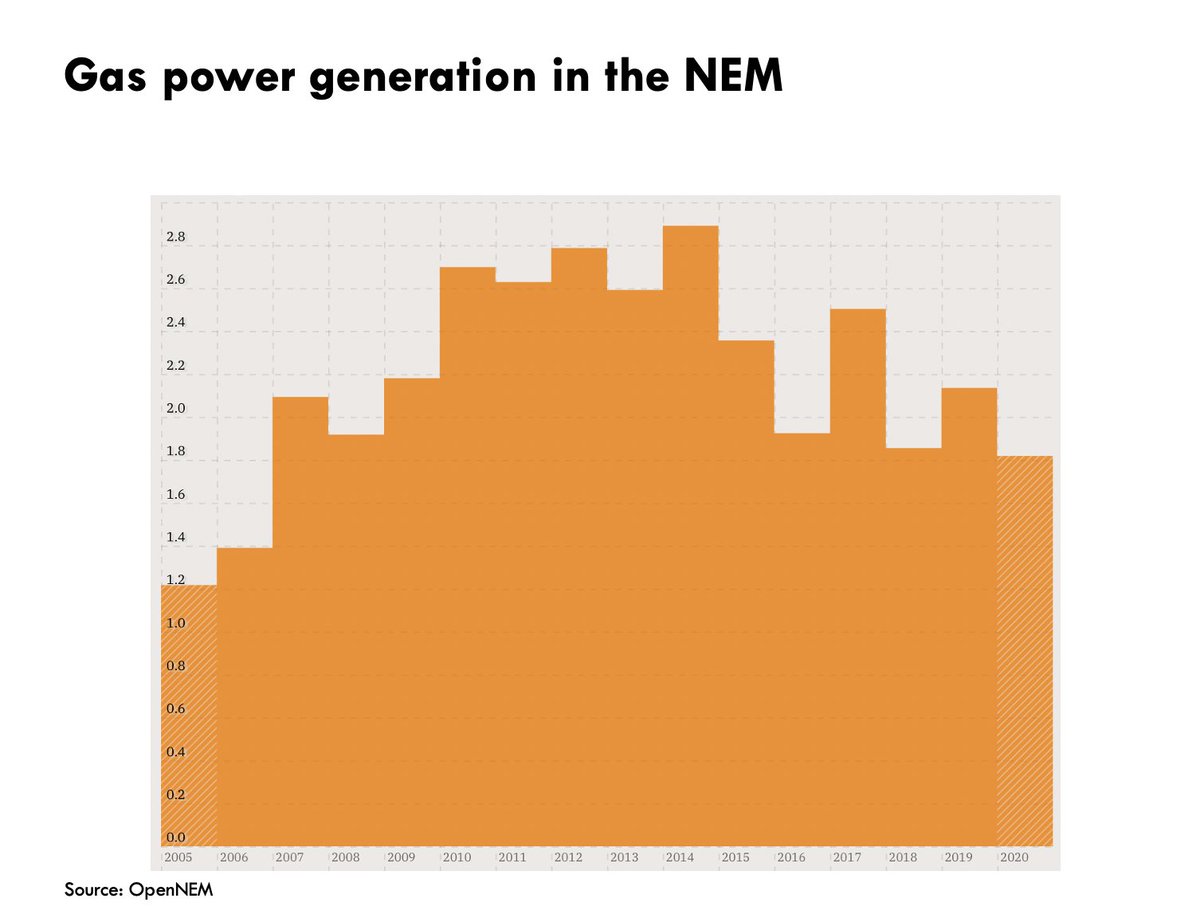
we're stuck in a silly debate over fossil gas right now!
look, gas is important…
eg. NSW's biggest gas generator (below) barely runs a few dozen hours a year, but when it does it helps keep the lights on and pushes prices down.
…but, it uses very little gas.
look, gas is important…
eg. NSW's biggest gas generator (below) barely runs a few dozen hours a year, but when it does it helps keep the lights on and pushes prices down.
…but, it uses very little gas.
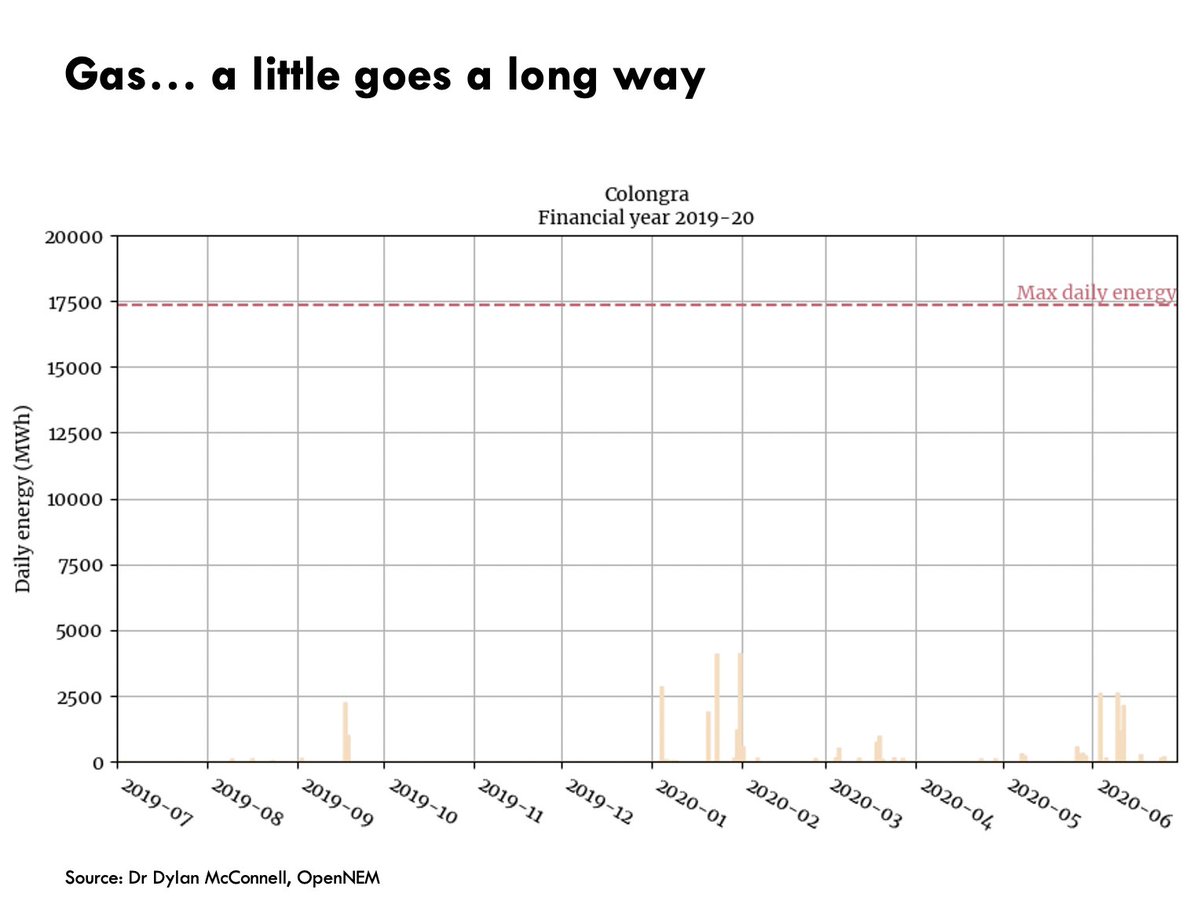
the step change scenario shows us that we can keep costs low… and keep the lights on… and decarbonise…
without using more fossil gas. in fact, if that scenario comes to pass, we'll use a fair bit *less* gas than we do now.
(look at that bright future for wind and solar!)
without using more fossil gas. in fact, if that scenario comes to pass, we'll use a fair bit *less* gas than we do now.
(look at that bright future for wind and solar!)
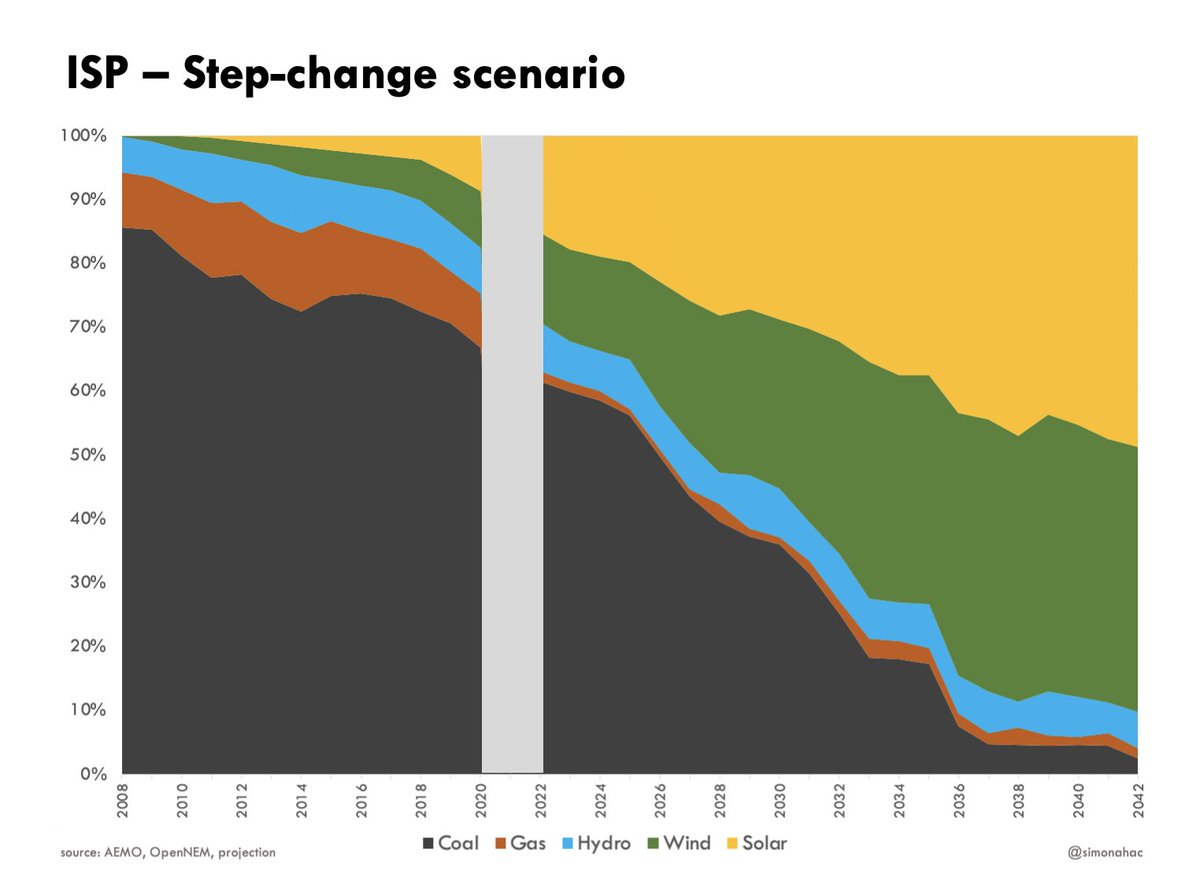
so how do we keep the lights on with so much variable renewables?
simple: we need lots of dispatchable generation — but no more than we have now. (see red dashed line below.)
battery & pumped hydro ('dispatchable storage') will displace coal & gas.
simple: we need lots of dispatchable generation — but no more than we have now. (see red dashed line below.)
battery & pumped hydro ('dispatchable storage') will displace coal & gas.
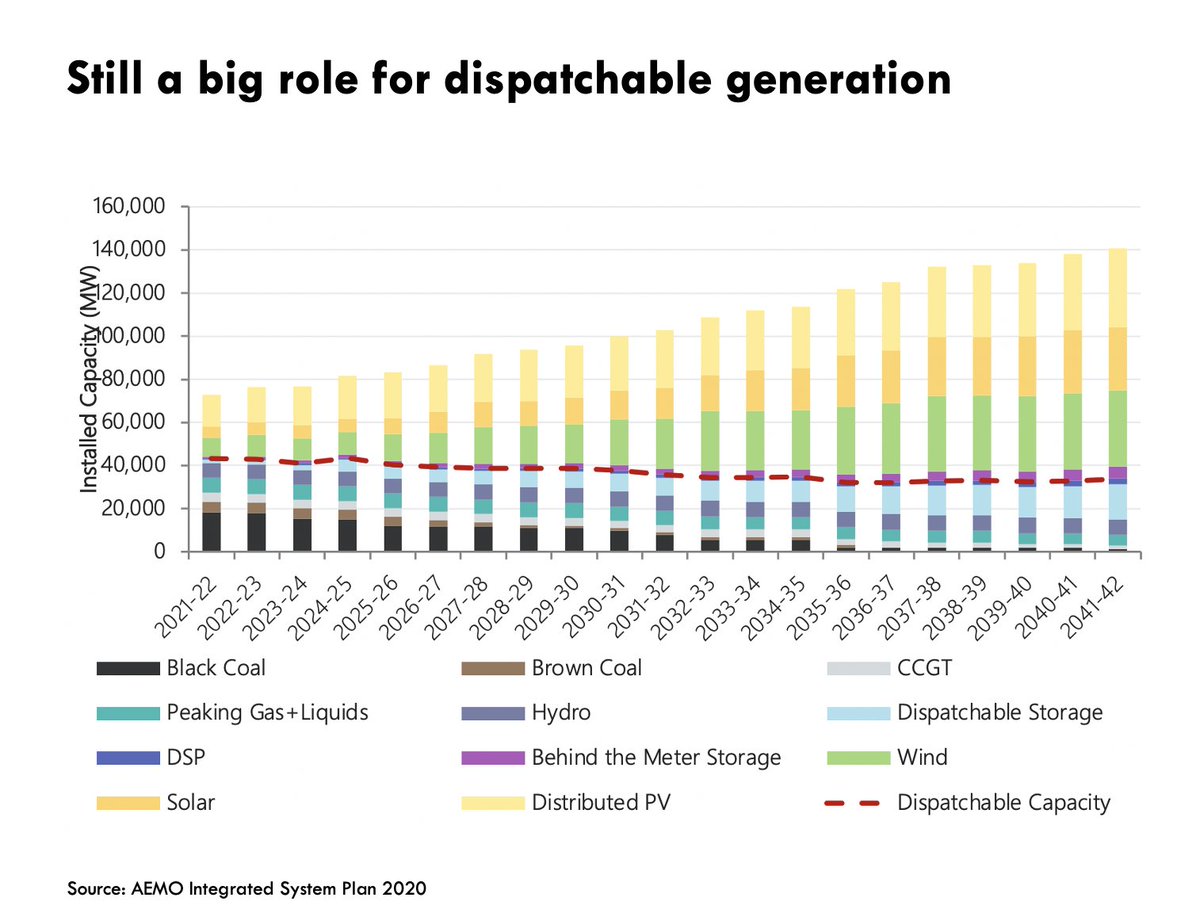
our energy will mostly come to us 'fresh' — ie. straight from wind, solar, traditional hydro and a little bit of fossil fuel — but a small amount will be 'frozen' (put in storage).
…fascinating that only ~12% of energy will be served up from storage!
…fascinating that only ~12% of energy will be served up from storage!

.@AEMO_Media has just started consultation on the 2022 version of the #IntegratedSystemPlan.
things to look out for:
• lower costs (falling interest rates, falling storage costs)
• serious focus on the impact of a hydrogen sector
• strong consumer demand for EVs, efficiency
things to look out for:
• lower costs (falling interest rates, falling storage costs)
• serious focus on the impact of a hydrogen sector
• strong consumer demand for EVs, efficiency
…and i can guarantee that from the 2022 vantage point, #australia's energy transition will look easier, cheaper, faster and even more unstoppable.
i can't wait! /ends
i can't wait! /ends
ps. these slides came from a longer talk i gave today for @ShineWingAU.
if interested, you can download the slide deck here:
scribd.com/document/48381…
if interested, you can download the slide deck here:
scribd.com/document/48381…
• • •
Missing some Tweet in this thread? You can try to
force a refresh



